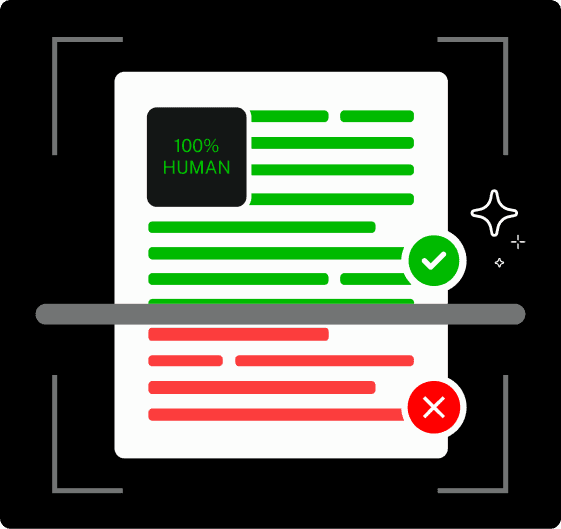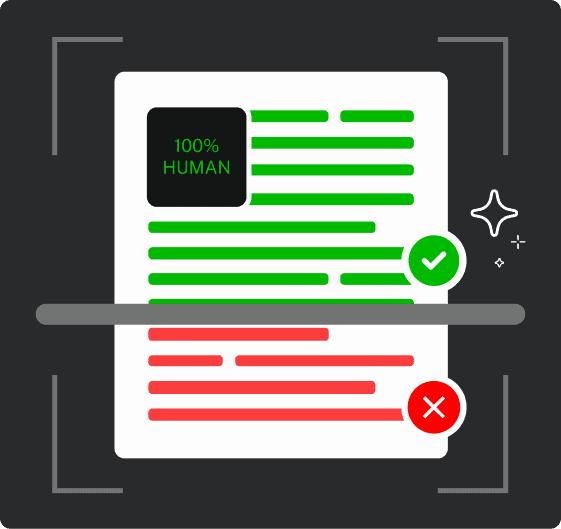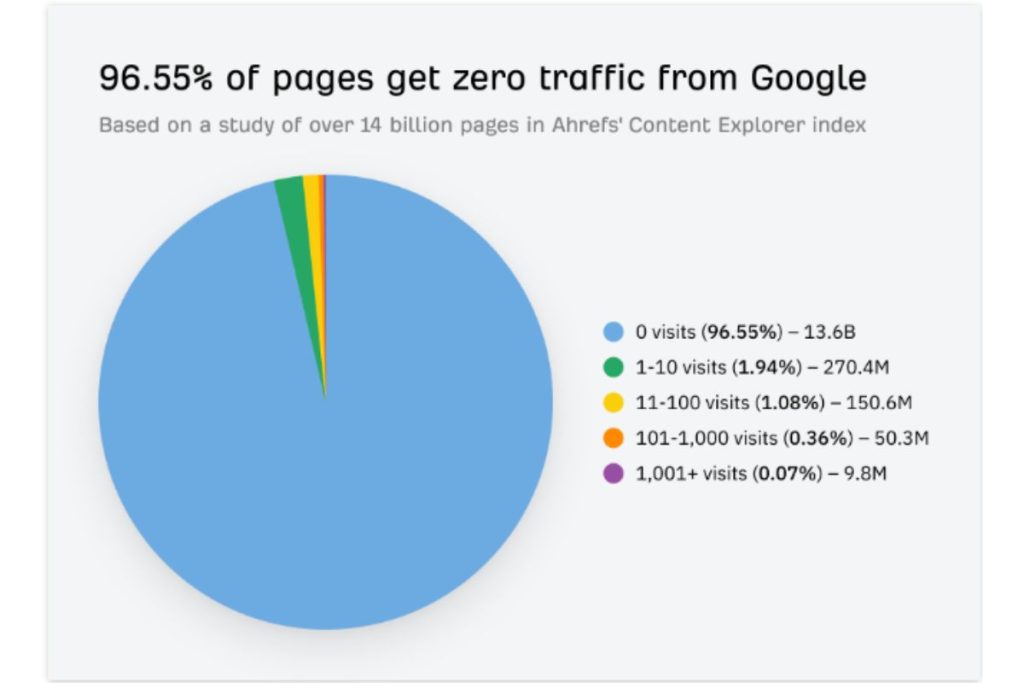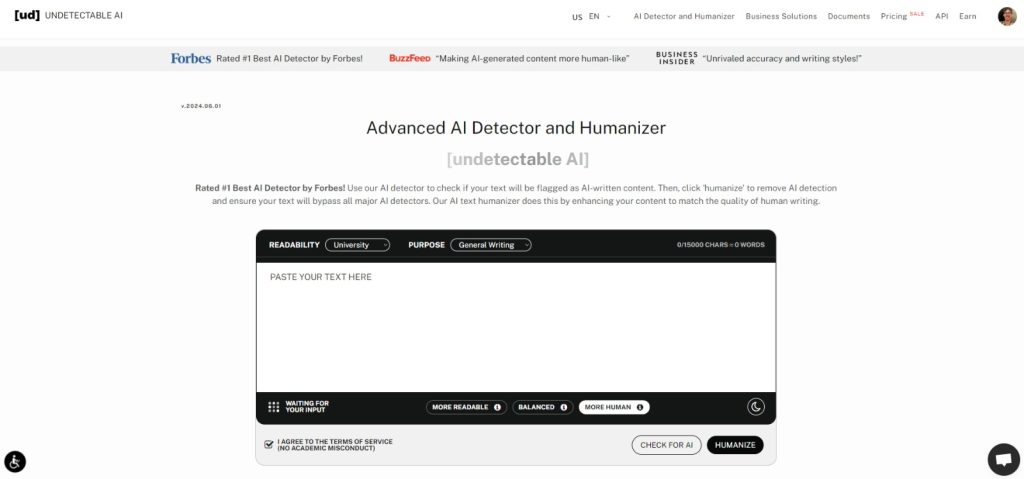Take a look at a typical day for an internet user – starting their morning with a cup of joe and scrolling through social media.
That’s where the gold lies for us writers. Their eyes are drawn to the blog you just posted, and they read your content.
Nearly eight out of ten internet users around the world read blogs.
That’s a lot! It’s also why businesses need competent blog content to reach their target audiences. The potential for content to drive search traffic and engage potential customers is limitless.
As a blog writer, your role goes way beyond just putting words on a page.
You certainly have the power to inform, inspire, and engage your readers.
But we aren’t machines. Sometimes, we encounter the occasional hiccup of not knowing where to start.
And while automating content is possible, with AI and creativity getting more and more integrated, completely relying on it can lead to some serious issues (more on that later).
You can’t go wrong starting with your blog post outline structure. Organize your thoughts and know what flows right.
Here’s an in-depth look at how to write a blog post outline effectively.
How to Create Amazing Blog Outlines in 8 Easy Steps
A blog outline is essentially a structured plan that lets you organize your main ideas and supporting points in advance.
Creating a blog post structure works much better than just winging it because it provides a clear roadmap.
It helps you stay focused while making sure that your content flows naturally.
Never Worry About AI Detecting Your Texts Again. Undetectable AI Can Help You:
- Make your AI assisted writing appear human-like.
- Bypass all major AI detection tools with just one click.
- Use AI safely and confidently in school and work.
Outlining saves you a lot of time and can even reduce writer’s block because you already have a plan in place.
It lets you see the big picture and make necessary adjustments before you even start drafting.
Now that you see the value in starting with a blog post outline, here are the steps to make it work.
Step 1: Define Your Purpose and Audience
First of all, what’s the point of whatever you’re planning to write? Find the purpose of your work and know what direction to go in.
You’ll also know who you’re writing to. Don’t write too generally, thinking everyone should read your stuff.
A target audience means you can tailor your content and attract the right people.
Knowing your purpose helps you stay focused on your main message, and understanding who your audience is will allow you to use the language, examples, and style that works best for them.
Step 2: Do Keyword Research
Keyword research identifies the terms and phrases your target audience is searching for online.
This is essential when creating a blog outline because you can insert the relevant keywords into your content.
Keywords are what improve the visibility of your content in search engine results.
Effective keyword research can significantly boost your SEO.
Content that doesn’t use the right keywords usually gets no traffic from Google, which is true for more than 96% of all content online.
Don’t be among that cluster and stand out from the crowd by taking your time to find keywords that make an impact.
Step 3: Decide Your Blog Post Format
No blog post is the same. Choosing your blog post format means deciding on the structure to deliver your content.
This format can strongly influence how you will organize your outline and convey your message.
Most common formats include listicles (“10 Best Tips to Get Better Sleep”), how-to guides (“How to Train for a Marathon”), reviews (“Originality.AI Review – 2023 The Premium AI Detector“), and many more.
Deciding on a format to use early on makes it easier to structure your outline and ensures that your post is easy to follow.
It also sets the reader’s expectations and gives them a familiar flow.
Step 4: Research Your Topic
Before writing something, researching ahead of time pays off. Gather information and insights to support the content you’re planning to write.
This increases your blog’s credibility and can even help it rank higher on search results.
But research also means being responsible. Use only reputable sources and take notes accurately.
Most importantly, make sure any references are cited properly to avoid any potential plagiarism.
Conducting research gives real value to your readers. This establishes you as a knowledgeable and trustworthy source.
Step 5: Brainstorm Blog Post Titles
Stuck in a rut? Do some brainstorming. Your blog post title can make an impact more than you think.
With the average attention span being just around eight seconds, having a title that packs a punch matters.
When brainstorming blog post titles, you should first think about the main theme of your post and come up with several potential titles based on that.
Aside from being catchy, the title should essentially capture the essence of your content.
Modern tools like ChatGPT can come in handy. ChatGPT can analyze the keywords and themes you feed it and suggest different title options in the tone you prefer.
You can also use it to generate new ideas and perspectives for your content, helping you out with the writing process.
This approach saves you time while making your title attention-grabbing and informative at the same time.
Step 6: Build Headings and Subheadings
The role of your content’s headings and subheadings is to structure your content into organized sections.
These help readers understand the main points of your blog post quickly and much more easily.
When creating a blog outline, identify first the major sections of your article.
You can then break these sections down into smaller and more specific subtopics.
Keep these sections short but also descriptive.
Step 7: Flesh Out Each Section
Now that your headings and subheadings are organized, it’s time to fill in these sections.
Fleshing them out means adding detailed information and other supporting points to the outline.
Expand on each subheading by jotting down any key points, examples, and sources you plan to include.
This step ensures each part of your blog post is well-written and that your arguments make complete sense.
Step 8: Review and Refine Your Outline
Is everything ready? Don’t forget to review your outline. This is your chance to refine it and make improvements.
As tempting as it is to get started right away, take the time to revisit each section.
Check that your outline flows seamlessly and that your points are clearly stated.
Reviewing and refining catch any mistakes ahead of time so you can be ready for writing without any hassle.
Outlining Tips for Bloggers and Content Marketers
Whether you’re an already experienced blogger or a content marketer who’s looking to improve your strategy, a well-structured outline can save you time and enhance the quality of your work.
There’s no perfect content, but you can make it the best it can be with these blog post outline tips.
Outlining Tip 1: “People Also Ask” Section
Add value to your blog by checking out the “People Also Ask” (PAA) section during your research.
This section displays the most common questions related to what you’re searching for.
Identify the relevant questions you want to answer on popular search engines like Google.
Take note of these questions in your outline so you can address the reader’s questions directly.
Your content is more relevant when it answers specific search queries.
Outlining Tip 2: Analyze Top-Ranking Articles
Study your competition. Analyze the most popular articles to see why theirs do well.
Review the structure, keywords they used, the topics covered, and even the tone.
You can gain insights into what resonates most with readers and how to write yours even better.
This analysis helps you create content that meets reader expectations and will stand a better chance at ranking well in the search engines.
Outlining Tip 3: Use AI to Draft a Blog Post Outline
AI is already being used in the workplace, so it’s no surprise that it’s now also used in content generation.
There’s no perfect content, but you can make it the best it can be with these blog post outline tips.
Tools like ChatGPT can assist in drafting your blog post outline by generating fresh ideas.
It can also organize your content with a draft blog post outline based on the keywords and themes you input into it.
Provide clear instructions and topic keywords. ChatGPT will then suggest headings, subheadings, and key points.
This lets you streamline your outlining process while enhancing the quality of your content with the power of AI.
Bonus Tip: Use an AI Detector and Humanizer to Assist Your Blog Writing
While AI tools are definitely valuable, there are still some ethical concerns to consider when using them.
To use AI responsibly, use an AI detector like Undetectable. AI detectors check that your content remains authentic by identifying AI-generated text.
Undetectable also has a built-in humanizer, so any detected patterns can be adjusted to always match natural writing styles.
Using Undetectable AI protects your content while maximizing the benefits of AI for blogging.
Integrating these tools lets you use AI responsibly, making sure your content is true to you.
Try it for FREE today and ensure your work stands out as genuinely human-crafted.
Use the widget below easily (English only)—just paste your text and check for AI.
The Benefits of Using AI to Create an Outline
Don’t know where to start? AI might be the answer. Using AI to create your blog post outline can give you some serious advantages:
- Saves time by generating outlines quickly based on the keywords and themes that you input.
- Suggests new ideas and perspectives to boost your content.
- Organizes your thoughts and structure content clearly.
- Allows you to focus more on the creative side and refining your content.
- Maintains consistency in tone and structure throughout your outline.
Using AI for outlining combines the best of technology with your expertise. This is a win-win for the content creation process.
FAQ’s
What is the outline of a blog post?
Before writing a blog post, having an outline organizes the main ideas, key points, and sections of your content. This serves as a roadmap that outlines the flow and structure of the post.
How do you structure a blog post?
To structure a blog post effectively, start with a clear introduction that grabs attention. Follow it up with well-organized main body sections that expand on the key points and arguments. Each section should have relevant headings and subheadings to guide readers through the content. You can then conclude with a summary or call to action to reinforce what you want to convey.
Are there tools available to help generate outlines for blog posts?
Yes, there are several tools available to help generate outlines for blog posts. AI-powered tools like ChatGPT can analyze topics, suggest headings, and organize the content. These tools can help speed up the outlining process and help you get more done.
How important is the structure of a blog post outline in enhancing readability?
The structure of a blog post outline is crucial to making it easy to read because it helps break things down clearly. A well-structured outline makes sure readers can easily find their way through the text and find all the relevant information. They ultimately understand your main points without confusion.
Conclusion
A blog post outline is always a great place to start. It’s all about getting your ideas down and organizing your ideas before you start writing.
But remember that no matter which blog post outline structure you choose, authenticity is key.
Utilize tools like Undetectable to maintain the integrity of your content while taking advantage of the benefits of AI.
With a solid outline and responsible AI use, you’re set to write blog posts that are sure to make an impact.





